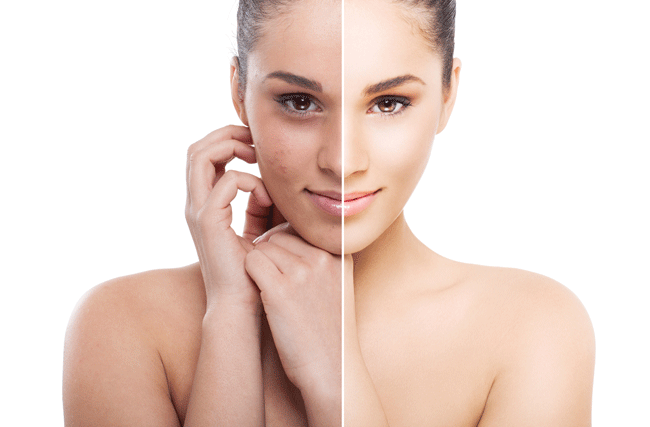Skin texture refers to the condition of your skin’s surface. Ideally, a good skin texture should be smooth and soft, well moisturized, and with a firm elastin and collagen support. Skins that are of uneven texture tend to be dull, dry, and rough. Having a rough skin is not an irregular occurrence. The reasons behind it are varied such as acne or rosacea, and can also be due to sun damage, the natural aging process, poor exfoliation, or using the wrong skin products. Also note that dry skin might cause the skin texture to feel uneven and rough, more so during the winter season.
Causes of Uneven Skin Texture
Your skin typically feels softer in parts that are not exposed to direct U.V rays.. Exposing your skin to the sun causes the breakdown of elastin and collagen. Collagen and elastin are the proteins responsible for your skin’s strength and elasticity. Also, smoking damages these proteins thus contributing to a prematurely aged rough skin. Aging is also a significant factor in this condition. This is because as we grow older, the rate of surface skin shedding decreases thus causing a buildup of dead cells.
Most Effective Procedures for Uneven Skin Texture
Daily and thorough skin care is the most important weapon in your arsenal when fighting uneven skin texture. Note that, even though there are a lot of skin care products that claim to alleviate uneven skin texture, they often do not work. The reason is that subsequent cellular buildup blocks the skin pores which prevent the products from penetrating the skin and yielding the desired changes. Nevertheless, there are minimally invasive procedures such as skin resurfacing treatment for an uneven skin texture that are quite effective.
[amazon box=”B07FFDDKP5,B01M4MCUAF,B009GEUPMY,B01N9XS6B6,B004AI97MA” template=”table”]
Skin resurfacing refers to the group of procedures typically done by an aesthetician or plastic surgeon to change the appearance and surface texture of the skin. They do this by removing the outer most damaged layers of the skin to reveal the smoother and softer skin beneath while encouraging the growth of healthy skin cells. They include:
[thrive_leads id=’2893′]
1. Laser Skin Resurfacing
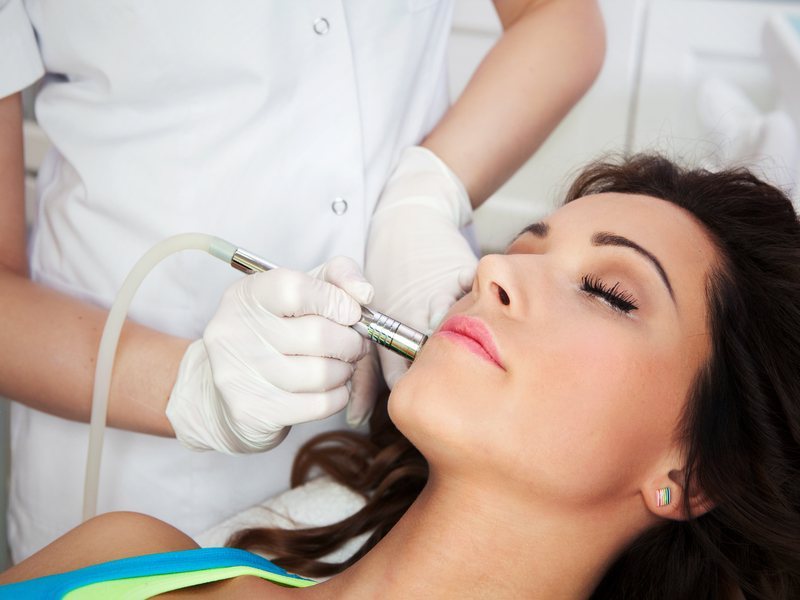
This treatment for uneven skin texture utilizes laser technology in the form of a highly concentrated beam of light energy. This technique can further be divided into ablative and non-ablative laser treatment.
Ablative Lasers
This form of laser skin resurfacing removes the outer layer of your skin so that new skin can grow in its place. How deep the laser beam penetrates your skin is predetermined by the nature of your problem, your goals, and your skin type. Your cosmetic surgeon will use this data to determine the best laser application for you.
Nowadays the common practice is to use fractional lasers. These lasers only remove fractions of skin in the area to be treated. It is considered to be a safer invasive laser treatment for uneven skin texture.
Non-Ablative Lasers
This laser treatment technique does not break the skin’s surface; instead, it works by heating the skin below the treatment area to encourage collagen growth thus restoring the skin’s natural tone and firmness. While this procedure works more gradually than the ablative method, it usually requires no downtime while having lasting results. Treatment for uneven skin texture using laser resurfacing techniques has drastic and long-lasting improvements which, however, do not appear overnight.
2. Chemical Peels
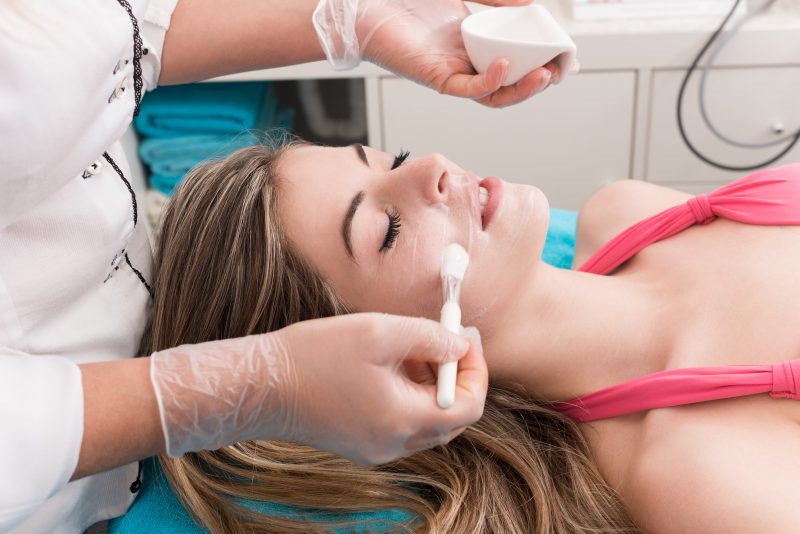
This treatment procedure involves the application of a chemical solution to resurface the skin by causing the outer skin layers to peel away. A cosmetic surgeon typically does this procedure. After the doctor swabs the solution on your skin, the subsequent days will see the affected layers peel away to reveal smoother skin.
Chemical peels help to:
- Smoothen fine lines and wrinkles;
- Reduce age spots, discoloration, and blotchiness;
- Tighten the skin;
- Remove acne scars or those from injury and surgery.
Chemical peel procedures can further be classified into light and deep. This treatment is based on the depth of the skin layer being penetrated. Deep peels are used to address advanced issues such as severe acne scars, extensive sun damage, and deeper wrinkles.
3. Microdermabrasion
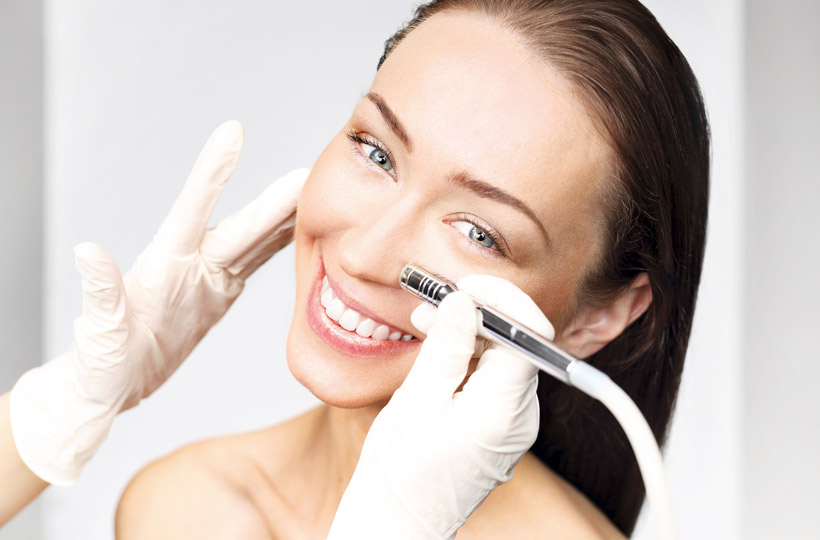
This skin resurfacing treatment for uneven skin texture involves mechanical exfoliation. Here, a device is used to remove the outer skin layers.
The technique is a typically gentle one, and the exfoliation is done by either the application of a fine mist of abrasive particles or by use of a fine tipped instrument. Microdermabrasion can be done to all skin types and has no side effects. It is typical for a microdermabrasion to be done in the same session as a chemical peel for enhanced results.
4. Dermabrasion

This is the more powerful mechanical exfoliation technique. It involves the use of a blade or instrument to slice off the skin layer in the area to be treated until the desired depth is achieved. Thus, the procedure is not for every skin type as it may affect skin pigmentation. Because of its invasive nature, a patient will typically be given anesthesia before the treatment. Also, the treated area will be raw hence direct sunlight should be avoided.
[amazon box=”B07FM5S66W”]
5. Microneedling
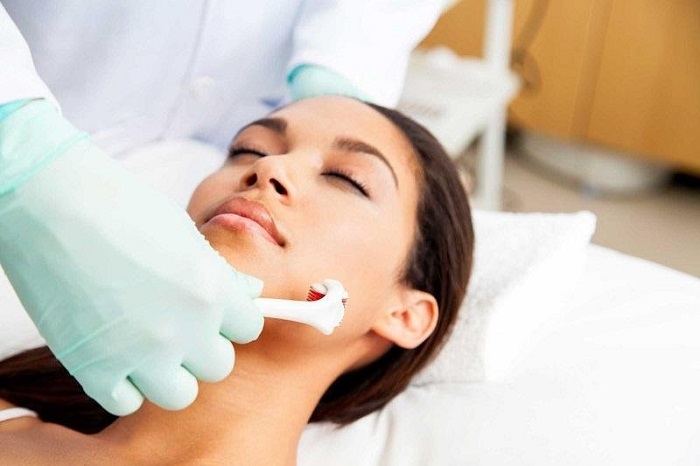
Microneedling involves evoking the skin to treat itself by healing naturally. This treatment for uneven skin texture consists of causing little injuries in the skin by use of an instrument that has fine needles. The injuries will prompt the skin to heal by producing elastin and collagen thus generating healthy new skin cells.
Note that these injuries are not typical intrusions on the skin thus are not painful. The process will be gradual since it depends on the skin to recreate itself by healing.
6. Intense Pulsed Light (IPL)

Intense pulsed light is a procedure that mimics laser resurfacing. However, instead of a laser beam, it utilizes a broad spectrum of light wavelengths that are delivered in brief pulses. Some of the light wavelengths absorb excessive pigment from the skin thus restoring an even complexion. It is non-invasive therefore an excellent substitute for the laser procedure as a treatment for uneven skin texture.
Final Thoughts
It is important to note that the success of your treatment is greatly determined by the expertise of your physician, aesthetician, or plastic surgeon. Hence, it is imperative that you check the track record of your physician before you enlist their services. These techniques for treatment for uneven skin texture will significantly alleviate your skin condition if done correctly.

